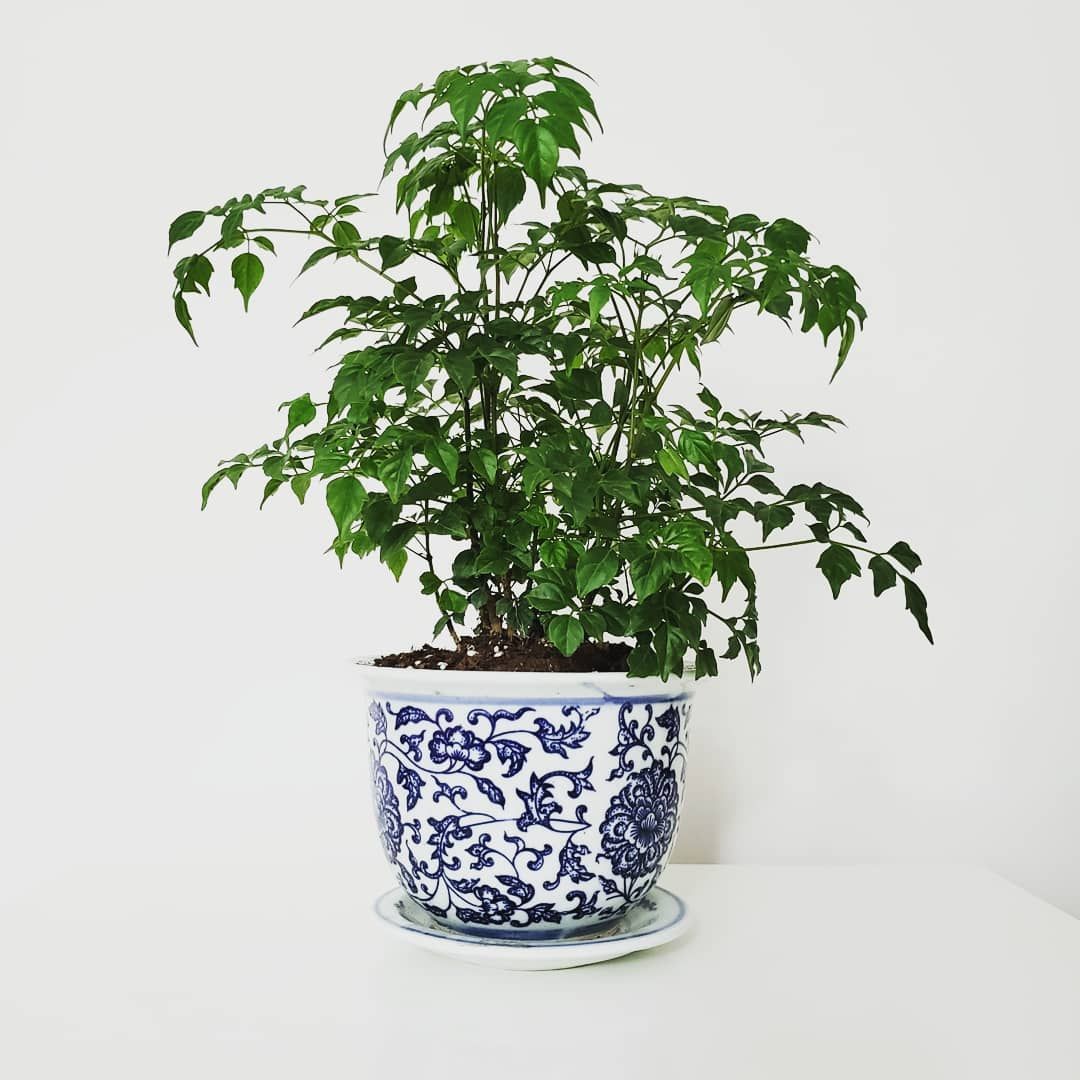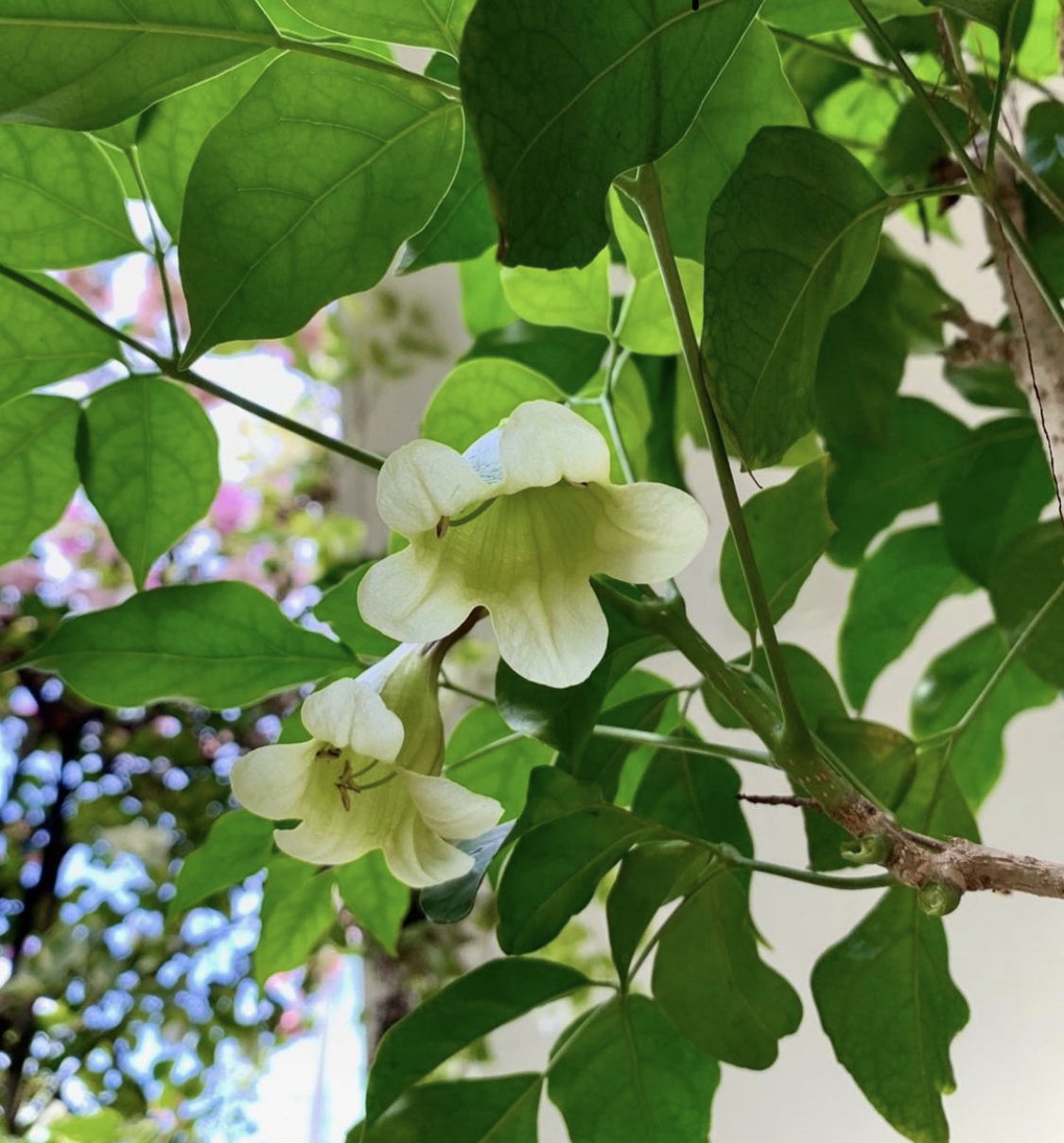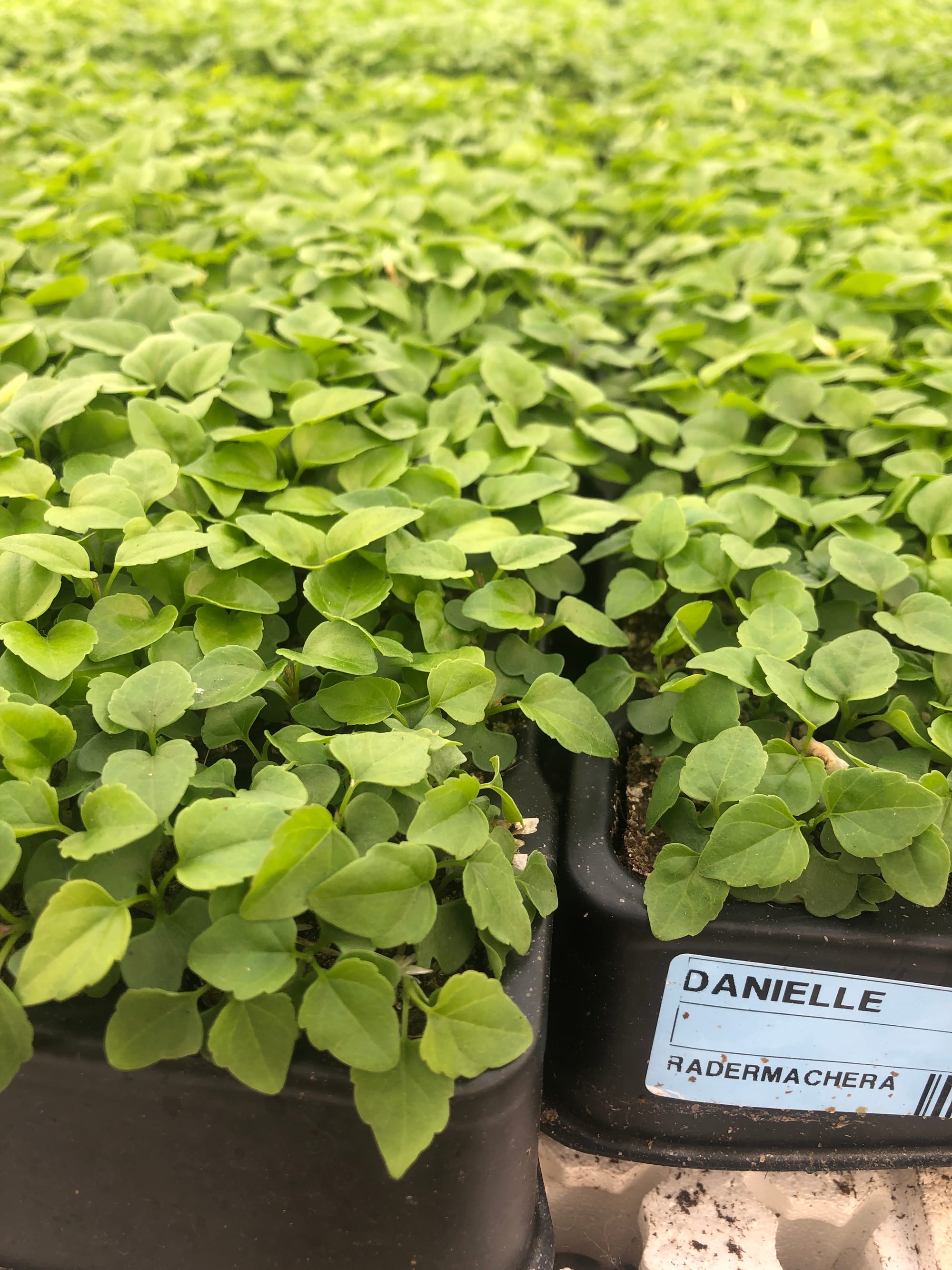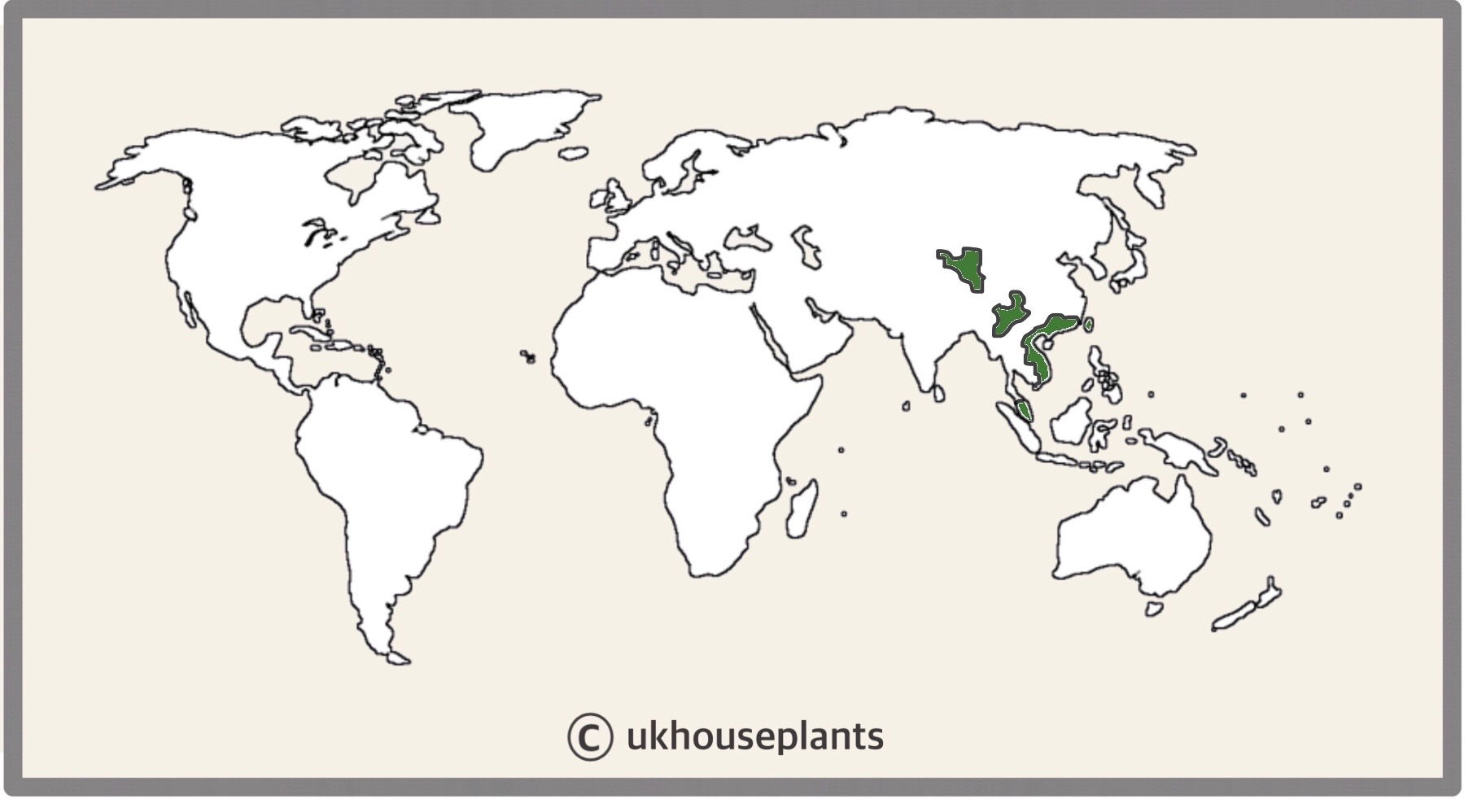
Radermachera sinica 'Danielle' - Copyright: @plant.heart.city
Contents
- Top Tips
- Location, Water, Humidity & Fertilisation
- Common Issues
- Origins, Temperature, Propagation, Repotting & Toxicity.
Need the answer to a specific plant query? Book a 1-to-1 video call with Joe Bagley, the website's friendly author, to overcome and address your niggling problem! Available on iMessage, WhatsApp, Facebook Messenger & more.
Top Tips & Info
- Care Difficulty - Easy to Moderate
- Provide a bright, indirect location with little to no direct sunlight - avoid deep shade at all costs.
- Radermachera are best kept in relatively moist soil due to their intolerance to long periods of droughts. Introduce a pebble tray to slow the rates of drying soil.
- Average room humidity is acceptable for this species.
- Fertilise using a 'Houseplant' labelled feed every four waters in the spring and summer, reducing this to every six in the colder months.
- Repot every two years during the spring, using a 'Houseplant' labelled potting mix.
- Keep an eye out for Spider Mites, Mealybugs & Scale that'll hide in the plant's cubbyholes; however, pests are usually uncommon with Radermachera.
Location & Light - 🔸🔸
A bright, indirect site is best for this specimen, as shady environments could lead to soil mould and slowed growth. Although the risk of sun-scorch is high with sun-filled locations, a location that offers up to two hours of morning or evening sunlight is acceptable, as long as the specimen is kept moist. Never situate this plant in all-day sunlight due to the risk of foliage decline and plant death.
Water - 🔸🔸🔸
Radermachera are best kept in reliably moist soil as inconsistent moisture levels may result in stunted, unhappy growth. Allow the compost's top third to dry out in between waters in the growing period, reducing this slightly further in the autumn and winter. Under-watering symptoms include a sudden loss of older foliage, yellowed or crispy foliage & stunted growth, whereas over-watering symptoms including a weakened or rotten stem, no new growth, yellowing lower leaves and eventual plant death. Click here to learn more about root rot and how to address it!
Humidity - 🔸
Radermachera are prized for their tolerance of dry air, which means that average room humidity is more than enough to satisfy them. Never situate one within a few metres of an operating radiator due to the enriched chance of browning leaf-tips. If you have issues of under-watering, we'd recommend introducing a pebble tray to keep the surrounding environment moist, which indirectly will slow the rates of drying soil, too!
Fertilisation - 🔸🔸
Fertilise every four waters during the growing period before reducing this to every six in the autumn & winter. Although an 'All-Purpose' fertiliser will still do the job, we'd recommend using a specific 'Houseplant' labelled fertiliser as it'll support the vital thirteen nutrients that this species will need to grow.
Common Issues with Radermachera
The rapid yellowing of older leaves could be a sign of irregular watering when the specimen is subject to periods of droughts and over-watering. If the older leaves or branches become yellow and drop in quick succession, introduce a pebble tray to prolong the risk of drying soil. Not only this, but the specimen will also be able to absorb moisture through the leaves (via the stomata), thus 'levelling off' the moisture requirements. If you have issues with over-watering, with the base of the plant becoming rotten, increase the amount of light slightly and repot the specimen using this article's step-by-step guide. Irregular irrigations can also lead to a change of leaf-size with juvenile growth.
When a Radermachera is severely dehydrated, most of its leaves will crisp-up and fall off - leaving you with a naked plant. Although it may spell the end of juvenile plantlets, there may still be light at the end of the tunnel for more established specimens.
1. If the stem is still plump without signs of retraction, prune-away the seriously affected areas and contain the plant (with its pot) in a transparent bag that has small holes. Keep the soil continually moist, providing a good level of indirect light and temperatures above 18°C (64°F). After a few weeks, new life will form in the nodal junctions on the stems, signalling the start of its recovery process. Maintain a sealed environment for the following month until you feel it's necessary to release it back into the open air.
2. For the prevention of environmental shock, be sure to introduce a humidity tray for higher levels of atmospheric moisture around the plant in its new setting. Not only will this ease the specimen back into normal functioning life, but it'll also reduce the rate of transpiration (water-loss in the leaves), and therefore downplay the risk of dehydration and further decline.
Alternatively, environmental shock could also cause sudden leaf loss, especially with recently-bought specimens. Read Section 2 of the previous paragraph to learn more about addressing this issue!
If your specimen is located in a dark environment with mould developing on the compost's top layer, use a chopstick to stab the soil in various areas gently. You should aim to enter the compost between the base of the plant and the pot's edge, as failure to do so may lead to damaging its lower portion. Leave the holes open for a few days before re-surfacing the soil to avoid it becoming overly dry. Not only will the gentle shift in the soil's structure mimic the work of small invertebrates in the wild (worms, etc.), but it'll also add oxygen back into the soil, thus reducing the risk of root rot. Repeat this monthly, or whenever you feel the potting-mix isn't drying out quickly enough.
If the specimen emits an odour similar to Hemp, this is a sign of damage whereby the plant has produced a substance to limit the introduction of bacteria. Although this is non-detrimental to the plant, reconsider how you treat the specimen to reduce the future risk of damage.
Transplant shock is a big issue when it comes to heavy-handed repots. Give the plant a good soak 24hrs before the action and never tinker with the roots, unless it has been affected by root rot. Typical signs of transplant shock are largely similar to under watering, with wilting, yellowing leaves and stunted growth among the most common symptoms. Click here to learn more about addressing transplant shock and a step-by-step guide on performing the perfect transplant.
Origins
The original name of Radermachera sinica was 'Stereospermum sinicum', penned back in 1882 by Henry Fletcher Hance. The species was then replaced into the current genus by William Hemsley in 1905, honouring, Dutch botanist, Jacob Radermacher who was largely interested in East Asian plants. The species' epithet of 'sinica' refers to its natural distributions across eastern China. Like the Pilea peperomioides, it was commercially ignored until the 1980s when the species' demand began to grow due to the popularity of easy-care houseplants.
Temperature
12° - 32℃ (54° - 90℉)
H1b (Hardiness Zone 12) - Can be grown outdoors during the spring and summer in a sheltered location whilst nighttime temperatures are above 12℃ (54℉), but is fine to remain indoors, too. If you decide to bring this plant outdoors, don't allow it to endure more than an hour of direct sunlight a day as it may result in sun-scorch. Regularly keep an eye out for pests, especially when re-introducing it back indoors.
Spread
The overall size can be up to 1.5m (5ft) in height and 1m (3ft) in width. The ultimate size will take between 5 - 10 years to achieve when repotted biannually, with up to 15cm (6 inches) of new growth per annum.
Pruning & Maintenance
Remove yellow or dying leaves, and plant debris to encourage better-growing conditions. While pruning, always use clean scissors or shears to reduce the chance of bacterial and fungal diseases. Remember to make clean incisions as too-damaged wounds may shock the plant, causing weakened growth and a decline in health. If your specimen is grown outdoors in a frost-free area, you can prune the top third of the foliage line to stimulate flowers in growing period of spring and summer. Radermachera can be trained into a Bonsai form by restricting the root growth after thickening the stem. It's recommended not to do this unless your wholly confident with pruning, and instead can be purchased in a Bonsai-form from IKEA.
Propagation
Via Seed or Stem Tip Cuttings.
Stem Tip Cuttings (Difficult) - Stems that are at least 8cm (3 inches) in height and part of an established plant are most successful. To avoid making a mess of the serrations, use a clean pair of scissors and cut 8cm down from the stem's end, dipping the wound in water and then into rooting hormone to speed propagation. Rooting can take in the range of between one to three months, depending on environmental factors and the cutting's quality. We recommend using a 'Houseplant' labelled potting mix, with a pot that has adequate drainage to avert the risk of blackleg. Provide a bright, warm setting of around 22℃ (72℉) with relatively moist soil, but be sure to allow the top half to dry out in between waters. You'll know if propagation is successful as the leaves will stay green and firm, along with small roots developing from the callus (dried wound). New foliar growth will emerge from the nodes after around twelve weeks, but it may take longer if the conditions aren't optimal. After a month of solid new foliar growth, transplant into a slightly bigger pot and treat it like a mature specimen with the care tips provided above.
Flowers
Radermachera will sparsely flower in their lifetimes when domestically grown; however, for the interest of this section, their inflorescence is mostly white and broad, much similar to the a trumpet. This plant is widely grown in Australia for a small shrub that can profusely flower shortly after an aggressive pruning session.
 The inflorescence of Radermachera sinica. Copyright: @elsiexie
The inflorescence of Radermachera sinica. Copyright: @elsiexie
Repotting
Repot every two years in the spring, using a 'Houseplant' labelled potting mix and the next sized pot with adequate drainage. Radermachera are far better potbound for several years due to the heightened risk of root rot and repotting-issues (like transplant shock) - so only repot if you feel it's wholly necessary.
Hydrate the plant 24hrs before tinkering with the roots to prevent the risk of transplant shock. For those situated in a darker location, introduce extra amounts of perlite and grit into the lower portion of the new soil to downplay over-watering risks. Click here for a detailed step-by-step guide on transplantation, or via this link to learn about repotting with root rot.
Book a 1-to-1 video call with Joe Bagley if you'd like a personal guide to repotting your houseplant. This will include recommending the right branded-compost and pot size, followed by a live video call whilst you transplant the specimen for step-by-step guidance and answer any further questions!
Pests & Diseases
Keep an eye out for mealybugs, aphids, spider mites, scale, thrips & whitefly. Common diseases associated with this species are root rot, red leaf-spot, heart rot, botrytis & southern blight - click here to learn more about these issues.
Toxicity
This plant is classified as non-poisonous, but if large quantities of the plant are eaten, vomiting, nausea and a loss of appetite could occur.
Retail Locations
IKEA (Bonsai Form), most supermarkets like Tesco, Sainsbury's & Morrison's, & Online Stores.
 Extra Photo: Most Radermachera (China Dolls) are commercially grown from seed, similarly to the Cheese Plant (Monstera) or Indoor Palm! The plants above are around two months old at this point.
Extra Photo: Most Radermachera (China Dolls) are commercially grown from seed, similarly to the Cheese Plant (Monstera) or Indoor Palm! The plants above are around two months old at this point.
Book a 1-to-1 Call with Joe Bagley
If you need further advice with your houseplants, book an advice call with ukhouseplants' friendly and expert writer today! This can be done via a video or audio call on most apps, including Facebook, FaceTime & Skype. A ten-minute call costs £5.99 (US$7), or £15.99 for thirty minutes. You can ask multiple questions, including queries on plants, pests, terrariums, repotting advice and anything in between. Please consider supporting this service to keep ukhouseplants thriving!
